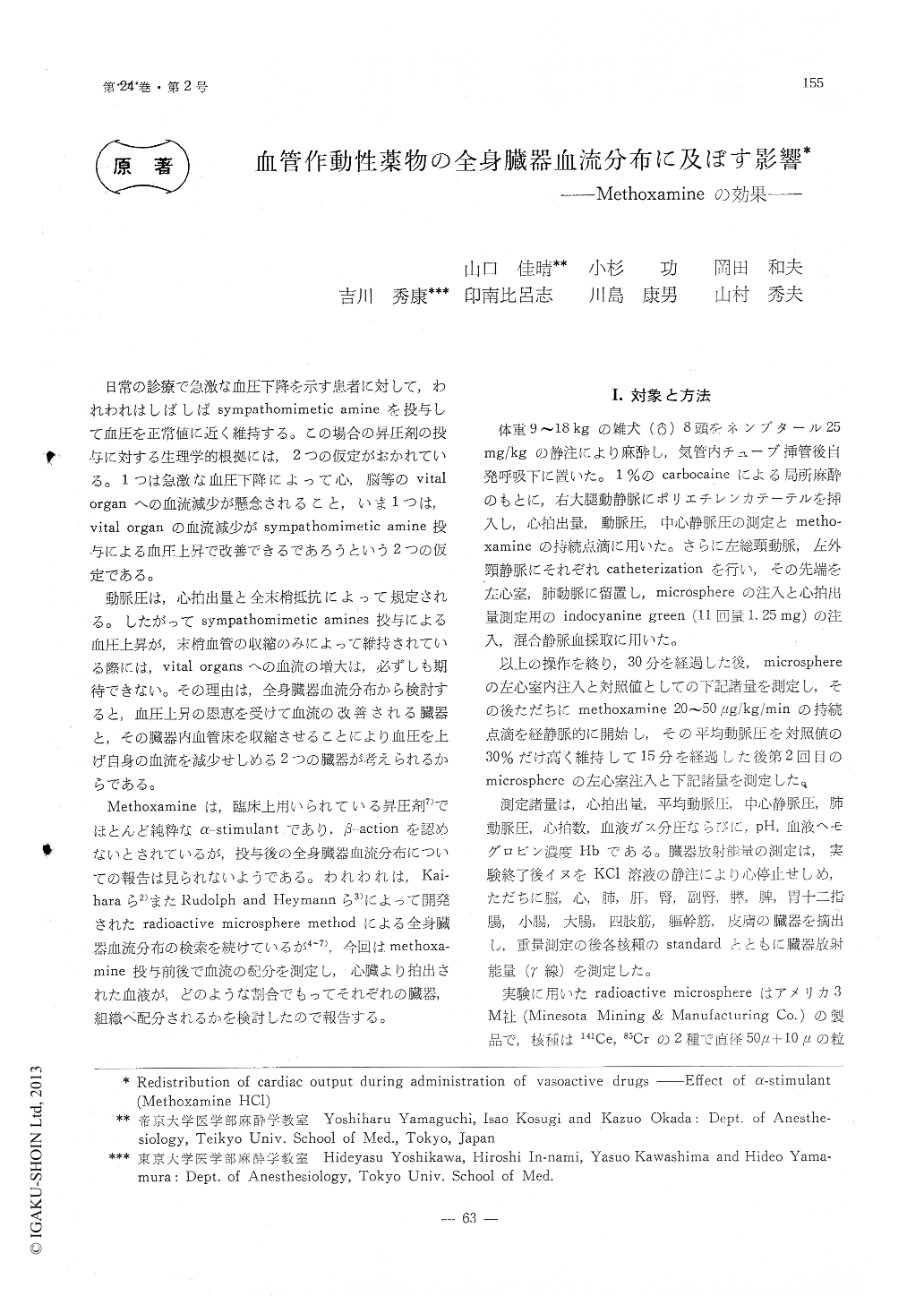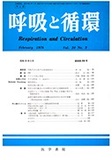Japanese
English
- 有料閲覧
- Abstract 文献概要
- 1ページ目 Look Inside
日常の診療で急激な血圧下降を示す患者に対して,われわれはしばしばsympathomimetic amineを投与して血圧を正常値に近く維持する。この場合の昇圧剤の投与に対する生理学的根拠には,2つの仮定がおかれている。1つは急激な血圧下降によって心,脳等のvital organへの血流減少が懸念されること,いま1つは,ital erganの血流減少がsympathomimetic amine投与による血圧上昇で改善できるであろうという2つの仮定である。
動脈圧は,心拍出量と全末梢抵抗によって規定される。したがってsyrnpathomimetic amines投与による血圧上昇が,末梢血管の収縮のみによって維持されている際には,vitalorgansへの血流の増大は,必ずしも期待できない。その理由は,全身臓器血流分布から検討すると,血圧上昇の恩恵を受けて血流の改善される臓器と,その臓器内血管床を収縮させることにより血圧を上げ自身の血流を減少せしめる2つの臓器が考えられるからである。
Although many vasoactive drugs are available to the clinician, hemodynamic data fully charac terizing their redistribution of cardiac output to various organs are imcomplete.
METHOXAMINE HCl is a sympathomimetic amine widly used clinically for the acute management of hypotension, but redistribution of cardiac output during infusion of this amine is unknown.
The present investigation was designed to study the redistribution of cardiac output during intravenous infusion of METHOXAMINE in the dog.

Copyright © 1976, Igaku-Shoin Ltd. All rights reserved.


